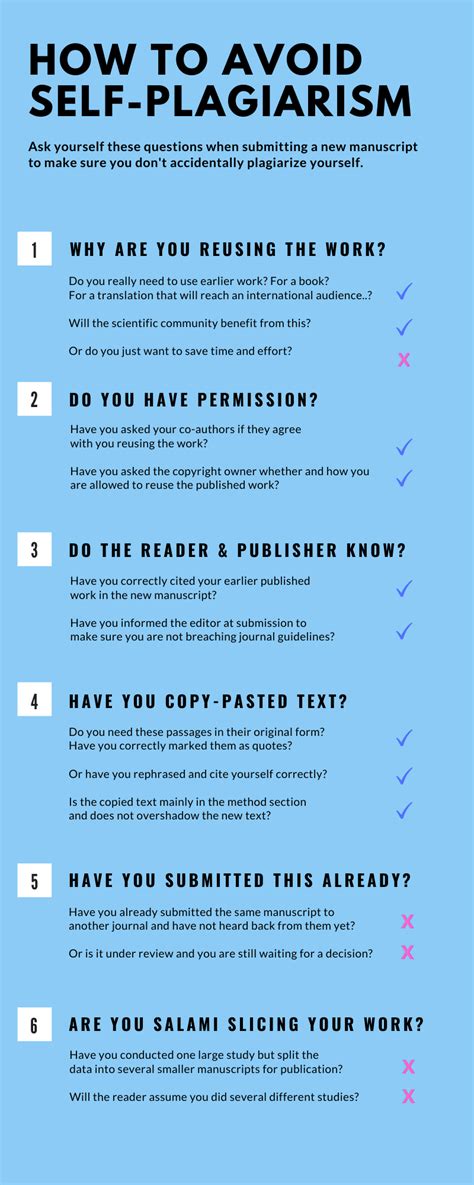Understanding Plagiarism

Plagiarism is defined as the unauthorized use or imitation of another’s work, including your own previous work, without proper attribution. When you submit work that has been copied or paraphrased from your previous assignments, you are essentially presenting it as new and original, which is dishonest and violates academic integrity.
Self-Plagiarism vs. Recycling
While self-plagiarism is generally considered unethical, there are certain instances where reusing your own work may be acceptable:
- Recycling within a Course: Reusing your own assignments for different prompts within a single course is often permitted, as long as you disclose this fact to your instructor.
- Submitting to a Different Publication: If you have previously published a work and wish to submit it to a different publication, you will typically need to obtain permission from the original publisher. However, you may be able to reuse portions of the work if you cite the original source.
Potential Consequences of Self-Plagiarism
The consequences of self-plagiarism can vary depending on the severity of the offense and the policies of your institution. Most commonly, you may face:
- Deducted points on the assignment
- Failure of the assignment
- Suspension from the course
- Expulsion from the institution
How to Avoid Self-Plagiarism
To avoid any allegations of self-plagiarism, consider the following steps:
- Cite Your Own Sources: Always include a citation when reusing your own work, even if it is from a previous assignment in the same course.
- Create New Content: If possible, create new content for the current assignment instead of directly copying or paraphrasing your previous work.
- Seek Instructor Approval: If you are unsure whether reusing your own work is permitted, consult with your instructor for guidance.
Table 1: Common Forms of Self-Plagiarism
| Type of Self-Plagiarism | Description |
|---|---|
| Direct Copy | Copying text verbatim from your previous work without citation |
| Paraphrasing | Altering the wording of your previous work but retaining its essential ideas without citation |
| Mosaic Plagiarism | Combining text from multiple sources, including your own previous work, without proper attribution |
| Self-Citing Excessively | Citing your own previous work excessively to meet a citation requirement |
Table 2: Consequences of Self-Plagiarism
| Consequence | Punishment |
|---|---|
| Minor Self-Plagiarism | Points deducted from assignment |
| Moderate Self-Plagiarism | Failure of assignment |
| Severe Self-Plagiarism | Suspension from course |
| Extreme Self-Plagiarism | Expulsion from institution |
Table 3: Acceptable Uses of Self-Plagiarism
| Situation | Condition |
|---|---|
| Recycling within a Course | Must disclose to instructor |
| Submitting to Different Publication | Must obtain permission from original publisher |
| Reusing Portions of Work | Must cite original source |
Table 4: Tips to Avoid Self-Plagiarism
| Tip | Action |
|---|---|
| Cite Your Own Sources | Always cite your previous work when reusing it |
| Create New Content | Develop original material for current assignments |
| Seek Instructor Approval | Consult with your instructor if unsure about reusing your own work |
Conclusion
While self-plagiarism is generally discouraged, there may be instances where reusing your own work is acceptable. However, it is crucial to cite your sources and seek instructor approval when necessary to avoid allegations of plagiarism. By adhering to ethical practices, you can maintain academic integrity and protect your reputation as a student or researcher.
